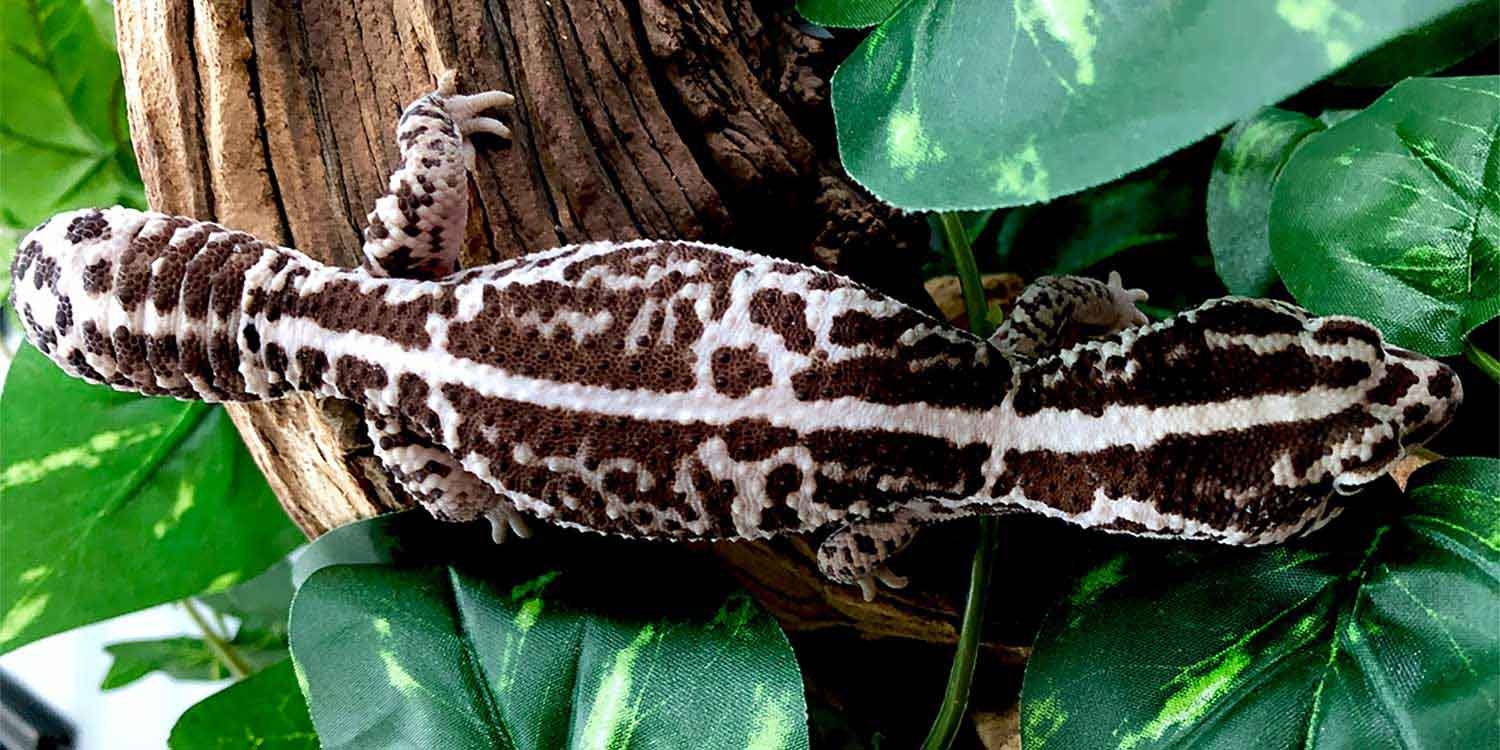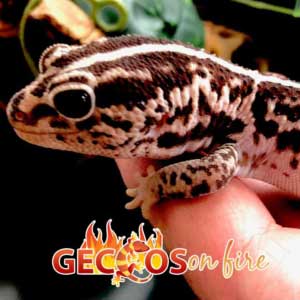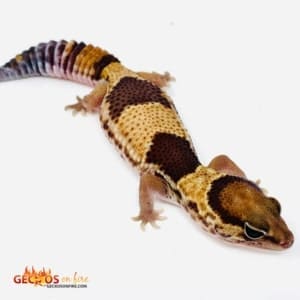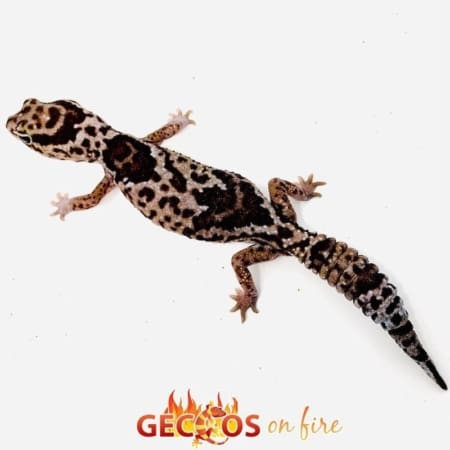African Fat Tailed Gecko Habitat
African Fat Tail gecko habitat & enclosure
A 20g long tank is ideal (30x12x12), but a 10gal (20x10x12) will be suitable until the gecko is about 6 inches from nose to tail. Keep in mind that AFT’s and Leo’s can reach up to 11 inches in total length as adults. You will need at least two hides for the gecko, one on the hot side and one on the cool. Both species are terrestrial and do not require anything too tall to climb on, as they would be at risk of falling and injuring themselves.
Fat Tailed gecko habitat – Substrate
NEVER use sand. The chances of the gecko ingesting the sand and suffering from impacted bowels is EXTREMELY high. We suggest never using any kind of loose substrate unless you have done extensive research on the proper mix of sand to soil and on impaction itself. It is best to use a simpler and more sanitary substrate. Paper towels, reptile carpet, newspaper, and tile are the best options to choose from when setting up the enclosure.
African Fat Tailed gecko habitat – Fat Tail gecko Lighting
Neither species requires exposure to UVB light, but can still benefit from the use of it. We suggest using either a 10.0 UVB bulb or a low watt florescent tube as the main light source if you choose to use one at all. It is commonly believed that these geckos are nocturnal animals, however, they are actually crepuscular, most active around dusk/dawn and during twilight. They benefit from having a clear day/night cycle, so we always suggest providing some kind of lighting.
Fat Tail Gecko enclosure and habitat – AFT Temperature
You will want to use a heat mat to maintain a warm environment for the gecko. You will want to place this on the underside of the tank on whichever end you want to use as the hot side. The ideal temperature on the hot side will be 90F, allowing the rest of the tank to fall between 70-80F. The safest way to ensure that your heat mat is not too hot/cold is to use a temperature controller.
This is simply a probe that is placed on top of the substrate in the area where the heat mat is located, and a temperature control dial that you set to the exact degree you want to achieve. Ideally, you want to place a hide on top of the heat mat with the probe resting underneath and on top of the substrate.
African Fat Tail Gecko habitat – AFT Humidity
Proper humidity levels are key to maintaining a healthy gecko. It is best to keep a humid hide somewhere in the tank, whether you choose to use the hide on the cool side, or add a third hide is fine. The humid hide is simply moist moss placed under a hide for the gecko curl up in. You could also use a small food storage container with a hole cut out of the lid and filled about ¾ of the way with moist EcoEarth substrate. Either one of these options will work equally well for maintaining humidity and giving the gecko a place to help with shedding its skin.
African Fat tailed gecko diet – water
These geckos will drink from standing water and therefore, will require a water dish in their enclosure. Be sure to use a shallow dish that the gecko can easily walk up to or into to drink from. Be sure to treat any tap water you are using with a de-chlorinator, or use bottled water. Change out the water at least twice a week to prevent any bacteria growth.
African Fat Tail Care Sheet (continued)
Before purchasing your new African Fat Tail Gecko for sale, we suggest reviewing our African Fat Tailed gecko care sheet.
Take a moment to look over this fat tail gecko care guide for how to properly take care of your new buddy. Please don’t hesitate to contact us with any questions you may have. Remember baby Fat tail geckos for sale have basically the same care as an adult fat tailed gecko for sale.
Fat Tail Gecko Diet – Food, Water, & Supplements
Live insects are a must for your gecko, as neither species eats plants, fruits, or vegetables. When deciding what kind of insects to feed, keep in mind that all of them have different nutritional properties and require different care (yes, you need to care for the bugs). Crickets are the most popular and readily available food choice. An alternative to crickets is Dubia roaches.
Dubia Roaches for fat tailed gecko diet
These roaches do not make noise, cannot jump, live longer, and have a more beneficial nutrient level than crickets. They are pricy and can be a challenge to find, but overall are a better choice. We feed both here so that the gecko is accustomed to a variety. Be sure to feed either insect a nutritious diet (gut-loading), such as chicken feed or manufactured diet from a pet store. A potato slice can be used as a water source, be sure to change it regularly.
Worms for your fat tailed gecko
Worms are a good treat, but should not be fed as a staple diet. Mealworms are the easiest to find and care for, as they will hibernated if left in the door of a refrigerator and last about two weeks. Super worms can be offered if they are sized appropriately for the gecko (i.e. no food items larger than the space between the geckos’ eyes). They CANNOT be refrigerated, cold is a death sentence. Wax worms are a nice fatty treat that most geckos love to snack on, just be sure to keep it to a minimum.
Gut load your fat tail gecko insects!
Whenever you’re offering food items, be sure that they have been gut-loaded and are dusted with the proper supplements. You can choose to buy calcium and vitamin supplements separately, or purchase an all in one. If you choose to do them separately, you’ll need a calcium powder with D3 and a vitamin powder such as vionate. You can purchase all-in-one options like Repashy Calcium Plus and Zoo Med Reptivite with D3. Whichever way you go, be sure to dust the food items at every feeding to ensure the gecko is getting enough calcium and vitamins in its diet.
Handling your fat tail gecko & Temperament
Both species respond very well to human interaction. AFT’s can be much more relaxed when handled, but also have a tendency to be shy. Leo’s are more active and inquisitive, but can be jumpy when handled. When you first receive your new gecko, take it EXTREMELY slowly when considering handling them. We suggest letting them settle into their environment for at least a week before you start to handle them at all. Once they have had time to settle down, you can start to slowly introduce yourself to them. Start by handling them a few inches off the ground of their enclosure, so that when they feel uncomfortable, they can easily walk away. Eventually, if socialized properly, they will view you as a companion and respond very well to being handled.







